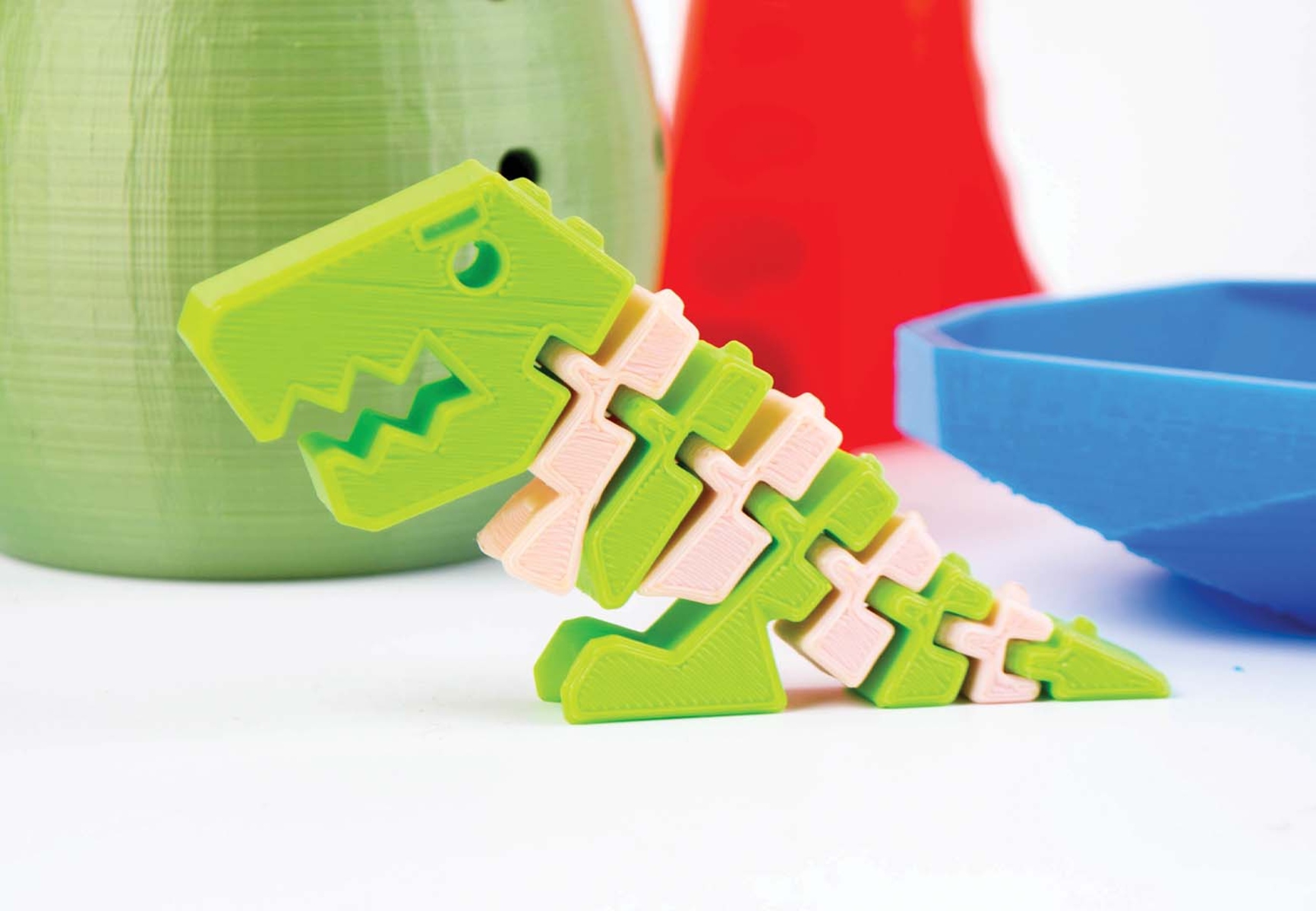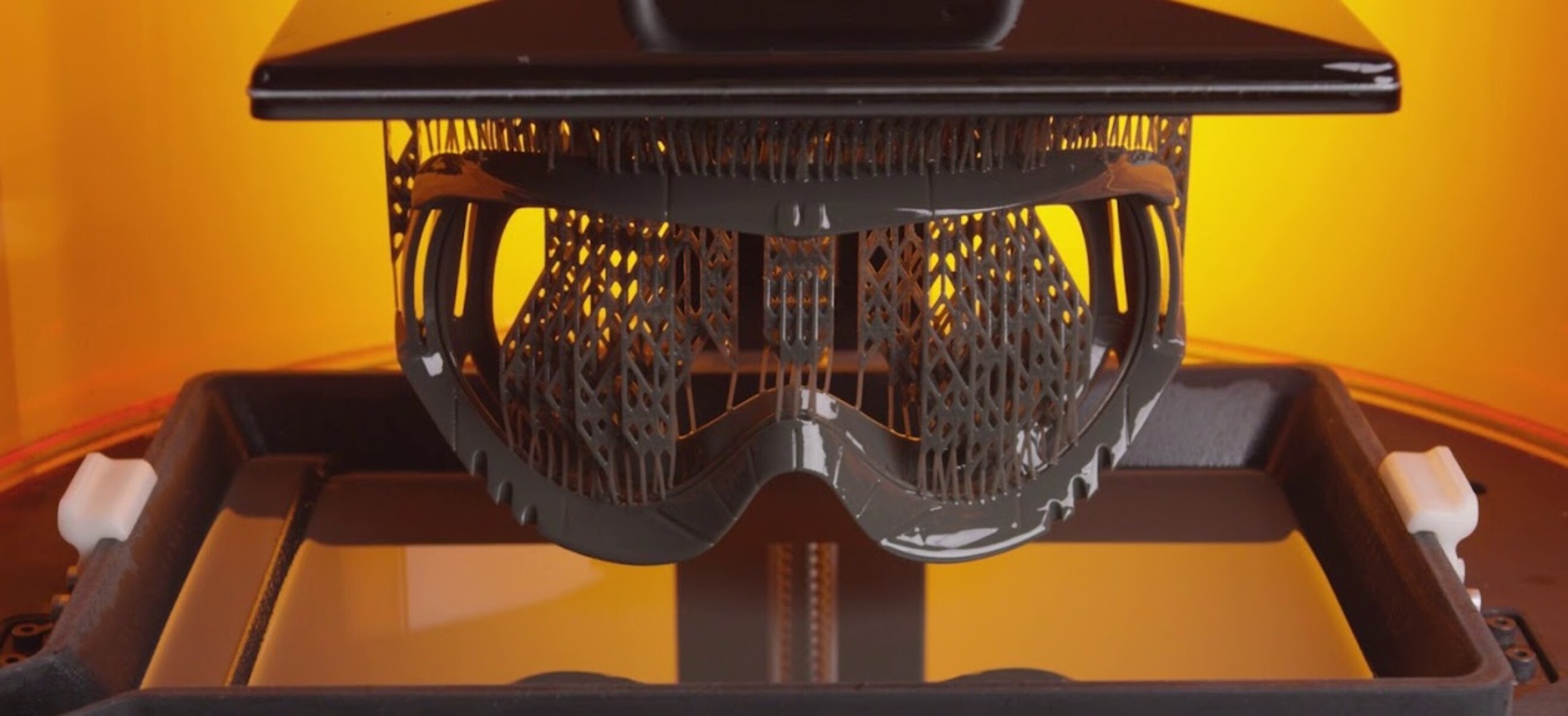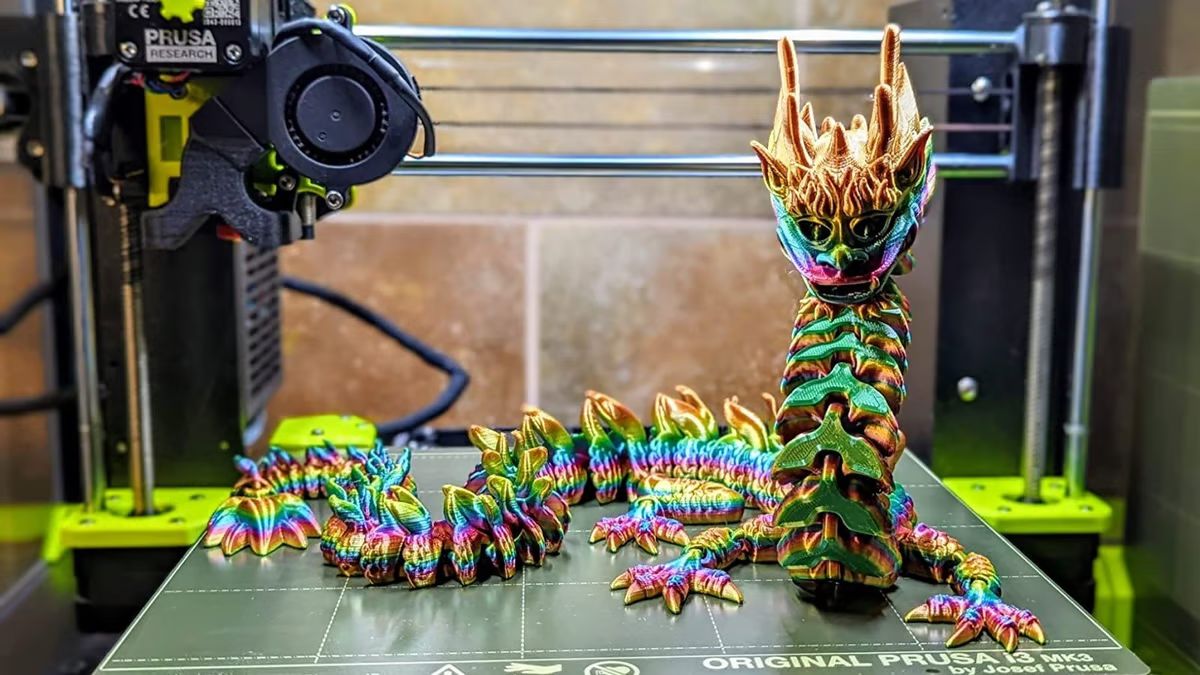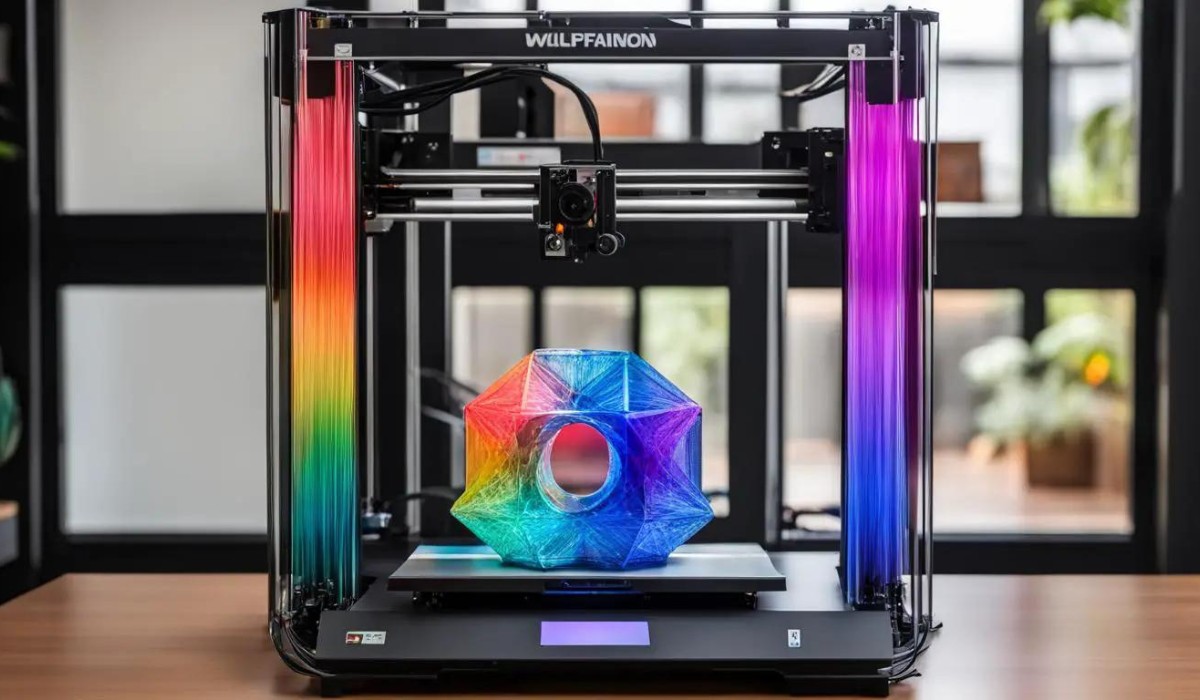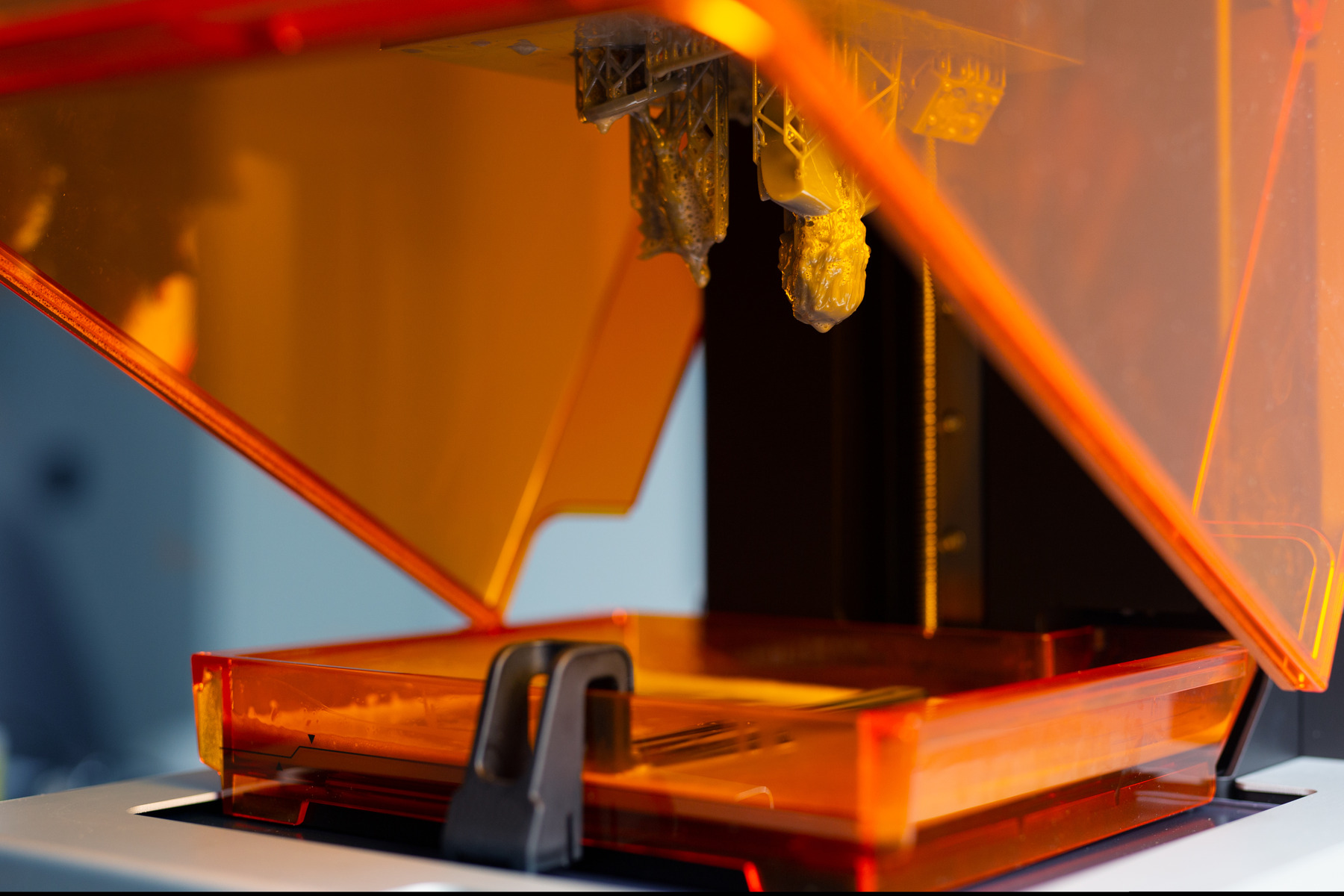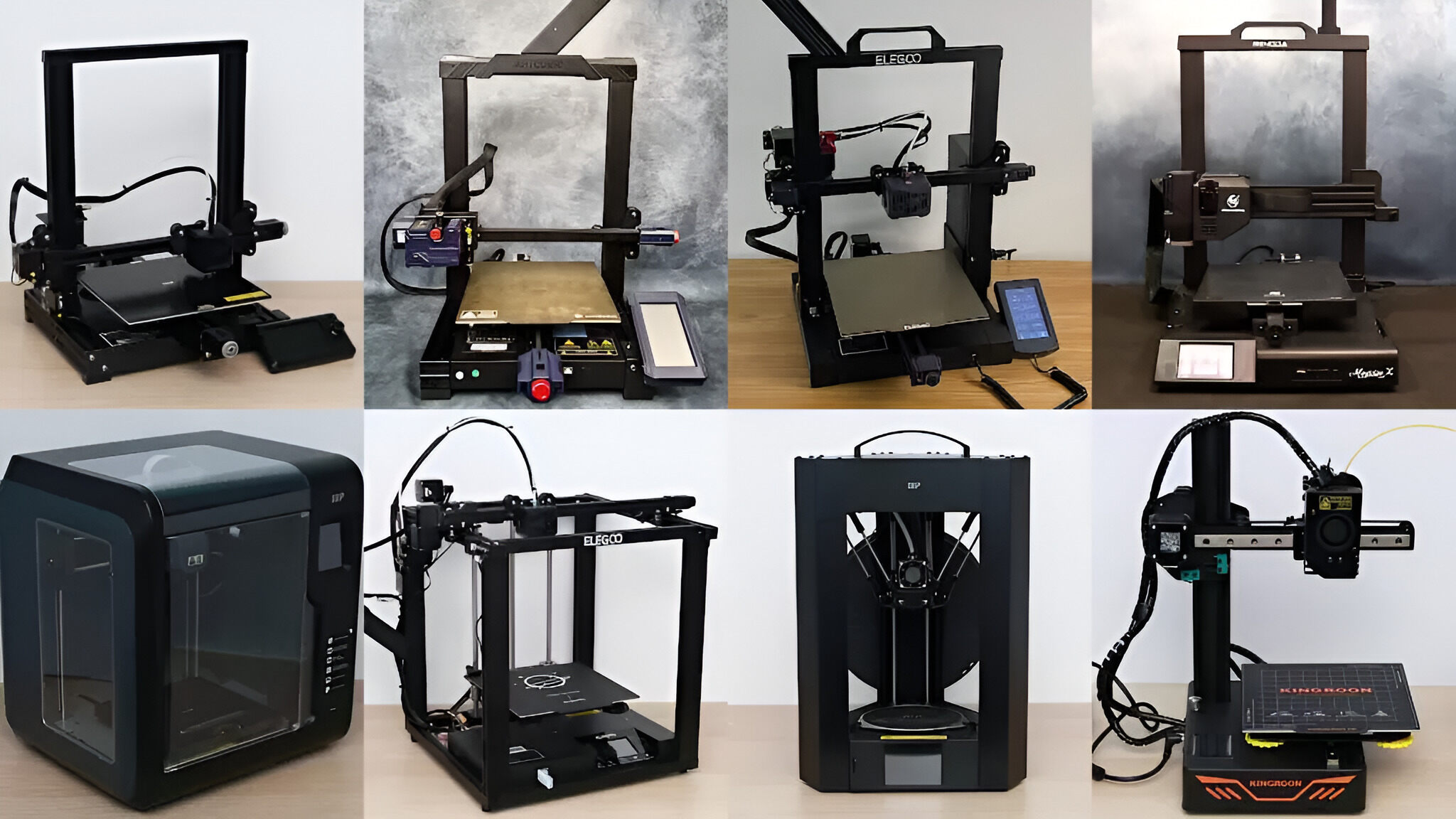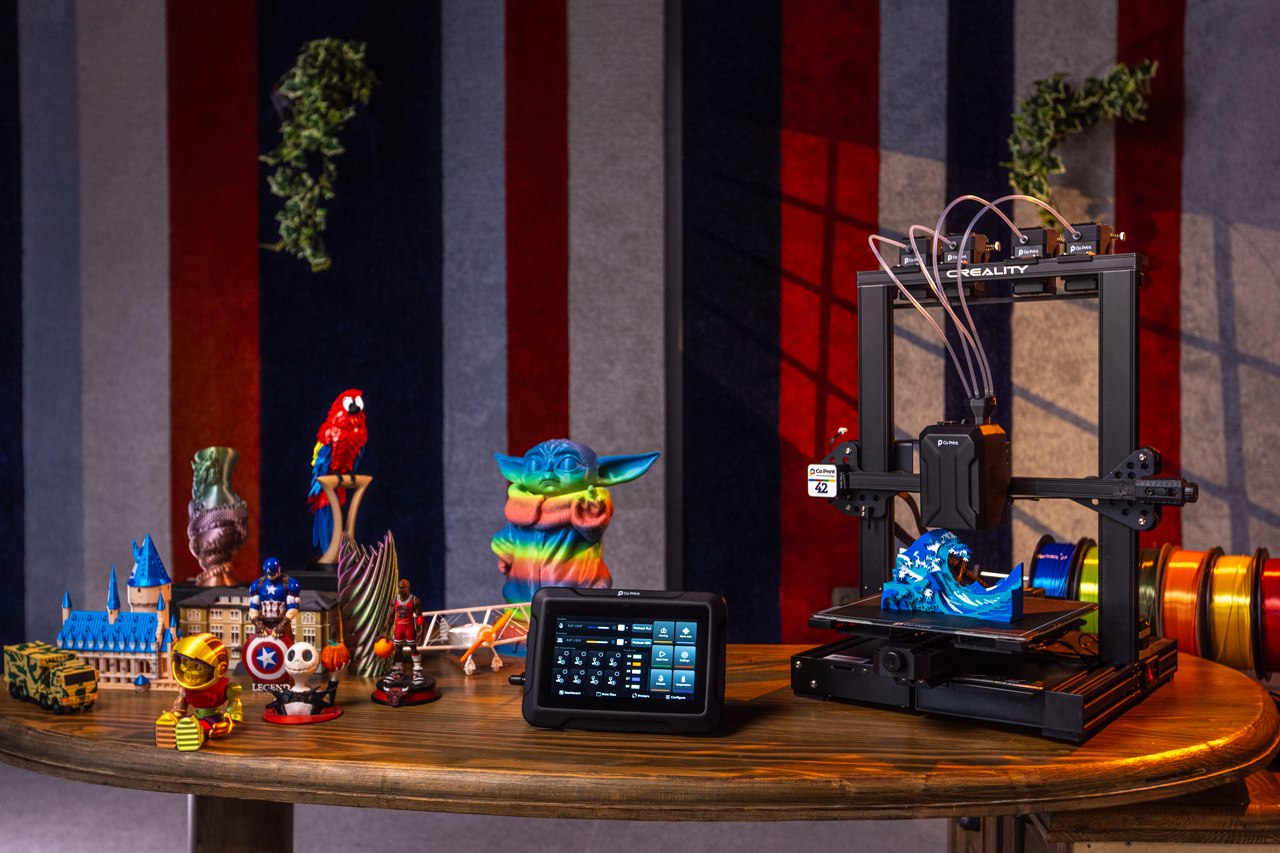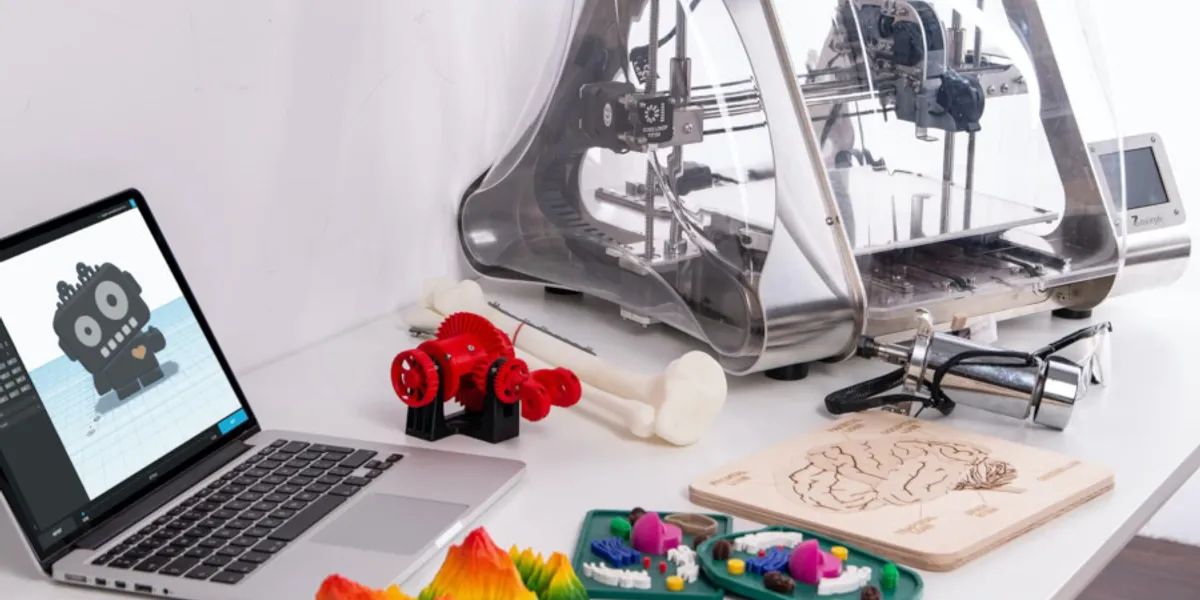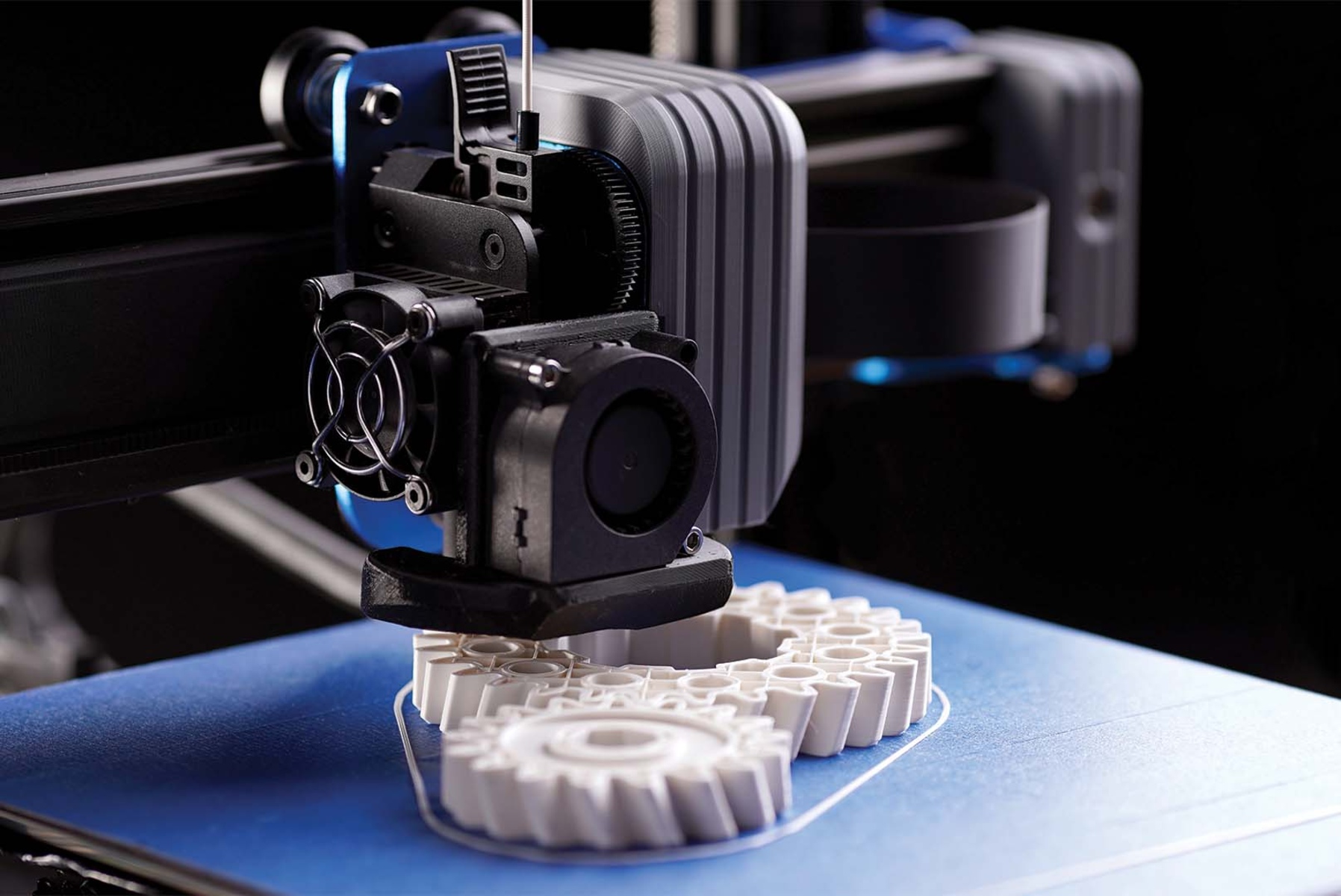Introduction
Welcome to the world of 3D printing! If you’re new to this incredible technology, you might be wondering what FDM stands for. FDM, which stands for Fused Deposition Modeling, is one of the most widely used and popular 3D printing techniques available today. This revolutionary process allows you to bring your digital designs to life by creating three-dimensional objects layer by layer. Whether you’re a hobbyist, engineer, or architect, FDM opens up a whole new world of possibilities for turning your imagination into reality.
With FDM, you can create objects with complex geometries and intricate details using a variety of materials, including thermoplastics, composites, and even metal-infused filaments. The process is relatively simple, yet incredibly powerful, making it suitable for both professional and personal use.
Throughout this article, we will explore the fascinating world of FDM printing. We’ll delve into its definition, how it works, the benefits it offers, its limitations, and the wide range of applications it has. So, without further ado, let’s dive right in and uncover the incredible potential of FDM in the world of 3D printing.
Definition of FDM
Fused Deposition Modeling (FDM) is an additive manufacturing process that uses a thermoplastic filament as the raw material to create three-dimensional objects. It is based on the principle of extrusion, where the filament is heated to its melting point and then deposited layer by layer to form the desired shape.
In FDM, a 3D printer equipped with a heated nozzle moves along a predetermined path, following the instructions provided by the digital design file. The nozzle melts the filament, which is then extruded onto a build platform or previously printed layers. As the melted filament cools down, it solidifies, bonding with the underlying layers and gradually building up the object.
The precision and accuracy of FDM printing depend on various factors, such as the nozzle diameter, layer height, print speed, and temperature settings. These parameters can be adjusted to achieve the desired level of detail and strength in the final printed object.
One of the key advantages of FDM is its versatility in terms of material options. The availability of a wide range of thermoplastics enables users to print objects with different mechanical properties, colors, and textures. Commonly used filaments include ABS (Acrylonitrile Butadiene Styrene), PLA (Polylactic Acid), PETG (Polyethylene Terephthalate Glycol), and TPU (Thermoplastic Polyurethane).
FDM printers are available in various configurations, ranging from small desktop machines suitable for home use to large industrial-grade systems used in manufacturing and prototyping. These machines have different build volumes and can cater to different printing needs and production scales.
Now that we have a clear understanding of what FDM stands for and the basics of how it works, let’s explore the intricate details of the FDM printing process and its inner workings in the subsequent sections.
How FDM Works
Understanding how FDM works is essential for grasping the intricacies of this 3D printing technique. The process involves a series of steps, from preparing the digital design to the final printing of the object:
- Designing: The first step in FDM printing is to create or obtain a digital 3D model of the object you want to print. This can be done using 3D modeling software or by downloading pre-existing designs from online repositories.
- Slicing: Once you have the 3D model, specialized slicing software is used to break it down into thin cross-sectional layers. The software generates a set of instructions, known as G-code, which includes the precise movements and settings required for the 3D printer to recreate each layer.
- Preparing the Printer: Before starting the printing process, the 3D printer needs to be properly set up. This involves ensuring the print bed is clean and level, loading the appropriate filament, and calibrating the printer settings such as nozzle temperature and print speed.
- Printing: With the 3D model prepared and the printer ready, the FDM printing can commence. The printer heats the filament in the extruder to its melting point. Once melted, the filament is pushed through a nozzle or extrusion head, which moves along the X, Y, and Z axes to deposit the melted material layer by layer.
- Layer Bonding: As each layer is deposited, the melted filament rapidly cools down and solidifies, creating a strong bond with the previously printed layers. This layer-by-layer approach allows for the creation of intricate and complex structures.
- Support Material: In some cases, FDM printing requires support structures to be added to the design. These temporary supports help to maintain the shape and stability of overhanging or intricate parts during the printing process. Once the print is complete, the supports can be removed manually or dissolved using specific solvents.
- Finishing Touches: After the printing is completed, the printed object may require some post-processing. This can involve trimming or sanding any rough edges, applying surface treatments or coatings, or further assembling and integrating additional components.
By following these steps, FDM printing technology enables the creation of three-dimensional objects with impressive accuracy and complexity. Next, let’s explore the benefits that FDM offers and why it has become such a popular choice among 3D printing enthusiasts and professionals.
Benefits of FDM
Fused Deposition Modeling (FDM) offers a myriad of advantages that contribute to its widespread adoption and popularity. Let’s explore some of the key benefits that make FDM an attractive choice for 3D printing:
- Versatility: FDM allows for the use of various thermoplastic materials with different properties, colors, and finishes. This versatility enables users to tailor their prints to specific requirements, whether it’s durability, flexibility, or aesthetics.
- Cost-Effective: FDM is a cost-effective 3D printing method, both in terms of printer acquisition and material costs. FDM printers are available at a wide range of price points, making them accessible to individuals and businesses. Additionally, the filaments used in FDM are relatively affordable compared to other printing materials.
- Ease of Use: FDM printers are known for their user-friendly interfaces and straightforward operation. The slicing software simplifies the process of converting 3D models into printable instructions, while the intuitive control panels allow for easy adjustments of temperature, speed, and other settings.
- High-Quality Prints: FDM can produce high-quality prints with excellent accuracy and fine details. As technology advances, printers with smaller nozzle diameters and finer layer heights become more accessible, enabling the creation of intricate and precise objects.
- Fast Printing Speeds: FDM is generally faster compared to other 3D printing methods. By adjusting parameters such as layer height and print speed, users can strike a balance between print quality and speed, making it well-suited for rapid prototyping and production of functional parts.
- Design Freedom: FDM allows for design freedom, enabling the creation of complex geometries that would be challenging or impossible to achieve with traditional manufacturing methods. The layer-by-layer approach lends itself to the fabrication of intricate structures and internal features within objects.
- Reduced Waste: FDM has minimal material wastage compared to subtractive manufacturing methods. The filaments used in FDM are used only where needed, reducing the amount of excess material that would be discarded.
- Prototyping and Iteration: FDM is particularly valuable for prototyping and iterative design processes. With its quick turnaround time and cost-effectiveness, designers and engineers can rapidly produce and test multiple iterations of their designs, making improvements and refinements along the way.
These benefits collectively make FDM a compelling choice for a wide range of applications, as we’ll explore in the next section.
Limitations of FDM
While Fused Deposition Modeling (FDM) offers numerous advantages, it also has its limitations that users should be aware of. Understanding these limitations can help manage expectations and make informed decisions when considering FDM as a 3D printing method:
- Layer Lines: FDM prints often exhibit visible layer lines, which can affect the overall surface finish and appearance of the printed object. While advancements in printer technology and post-processing techniques have reduced this issue, it may still be present, particularly on large or curved surfaces.
- Material Constraints: FDM is limited to the use of thermoplastic materials, which may not always meet the desired mechanical properties required for certain applications. While there is a wide range of filaments available, the selection may not be as comprehensive as desired for specialized use cases.
- Dimensional Accuracy: Achieving precise dimensional accuracy can be a challenge in FDM. Factors such as thermal expansion, shrinkage, and warping of the printed parts can result in slight variations from the intended dimensions, especially in larger prints or those with intricate geometries.
- Overhangs and Support Structures: FDM struggles with printing overhanging features and complex geometries that require support structures. These supports may be necessary to maintain the integrity of the print, but they can be time-consuming to remove and may leave behind minor surface imperfections.
- Print Orientation: The orientation of the part during printing can affect the strength and surface quality of the final print. The choice of orientation requires careful consideration, as different angles may result in variations in strength, surface finish, and support requirements.
- Print Speed vs. Quality: A trade-off exists between print speed and print quality in FDM. Increasing the print speed can compromise the level of detail and overall quality, while slower speeds yield better results at the cost of longer print times.
- Size and Scale: FDM printers have limitations in terms of the maximum printable size. Large-scale prints may require a printer with a larger build volume or necessitate splitting the object into multiple smaller parts for later assembly.
- Post-Processing Requirements: Depending on the desired finish and functionality, FDM prints may require additional post-processing steps such as sanding, painting, or sealing to achieve the desired end result.
Understanding these limitations can help manage expectations and ensure that FDM is used appropriately for suitable applications. Despite these limitations, FDM remains a powerful and accessible 3D printing technology.
Applications of FDM
Fused Deposition Modeling (FDM) has a wide range of applications across various industries. Its versatility, affordability, and ease-of-use make it a popular choice for both professional and personal use. Let’s explore some of the key applications where FDM excels:
- Prototyping: FDM is extensively used in rapid prototyping. Its ability to quickly produce functional prototypes allows designers and engineers to iterate designs, test form and fit, and make improvements before moving on to full-scale production.
- Product Development: FDM plays a vital role in product development, enabling companies to move through the design process more rapidly. It allows for the creation of concept models, functional prototypes, and even end-use parts, reducing development time and costs.
- Architecture: Architects and architectural firms utilize FDM to create scaled models and architectural prototypes. FDM’s ability to produce large-scale prints helps visualizing and communicating complex building designs and spatial layouts.
- Educational Tools: FDM is widely used in educational settings, from K-12 schools to universities. It allows students to bring their ideas to life, fostering creativity, problem-solving skills, and enhancing learning experiences in subjects like engineering, science, and design.
- Jewelry Making: FDM is gaining popularity in the jewelry industry for its ability to create intricate and customizable designs. Jewelry designers use FDM to produce prototypes, molds, and even finished pieces using materials such as wax filament.
- Customization and Personalization: FDM enables the production of customized products tailored to individuals’ specific needs and preferences. This includes personalized phone cases, figurines, fashion accessories, and more, offering a level of personalization that traditional manufacturing techniques struggle to achieve.
- Art and Sculpture: The artistic community has embraced FDM as a medium for creating sculptures, installations, and art pieces with intricate details and unique shapes. FDM allows artists to experiment with form, texture, and dimension in ways that were not previously possible.
- Engineering and Manufacturing: FDM is used in various engineering applications, including functional prototypes, jigs and fixtures, tooling, and even end-use parts. The ability to produce durable and mechanically functional prints makes FDM a valuable tool in the overall production cycle.
- Medical and Healthcare: FDM is utilized in the medical field for creating anatomical models, surgical guides, and prosthetics. It allows for patient-specific customization, improving surgical planning, and enhancing the quality of patient care.
These are just a few examples of how FDM is transforming industries and opening up new opportunities for innovation. The wide range of applications demonstrates the versatility and practicality of FDM in various fields.
Conclusion
Fused Deposition Modeling (FDM) has revolutionized the world of 3D printing, offering a cost-effective and accessible method for turning digital designs into physical objects. With the ability to print with various thermoplastic materials, FDM provides versatility, ease of use, and a wide range of applications across industries.
Throughout this article, we’ve explored the definition of FDM, how it works, the benefits it offers, its limitations, and its diverse applications. FDM enables rapid prototyping, product development, architectural modeling, educational tools, customized creations, and much more. It has become a vital tool in various fields, fueling innovation, and pushing the boundaries of creativity.
While FDM does have its limitations, such as visible layer lines and material constraints, advancements in technology and post-processing techniques continue to improve the quality of FDM prints. Additionally, ongoing research and development are expanding the range of materials available for FDM printing, further enhancing its capabilities.
Whether you’re a hobbyist, engineer, artist, or medical professional, FDM allows you to unleash your imagination and bring your ideas to life. From creating functional prototypes to personalized products and intricate art pieces, FDM opens up a world of possibilities.
As technology continues to advance, we can expect FDM to become even more refined, efficient, and capable. With its affordability, accessibility, and the ever-expanding range of materials and applications, Fused Deposition Modeling will continue to play a crucial role in shaping the future of manufacturing, design, and innovation.







